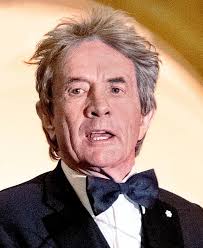The Life and Career of Martin Short: A Comedy Legend

Introduction
Martin Short is a name synonymous with laughter and entertainment. A towering figure in the world of comedy, he has captivated audiences for decades with his unique blend of wit, improvisation, and larger-than-life characters. His extensive career spans multiple mediums, including television, film, and theatre, making him one of the most versatile performers in the industry. In a world that often looks for a good laugh, Short’s contributions to comedy hold immense relevance, as his work continues to inspire both seasoned entertainers and emerging talents.
Early Life and Career
Born on March 26, 1950, in Hamilton, Ontario, Canada, Martin Short began his journey in entertainment at a young age. He studied at McMaster University, where he honed his skills in drama. In the early 1970s, Short gained recognition as a member of the Canadian sketch comedy show “Second City Television (SCTV),” where he created unforgettable characters like Ed Grimley. This breakthrough role paved the way for a successful career in the United States, including stints on “Saturday Night Live” and various film projects.
Acclaimed Works and Achievements
Short’s career is marked by a plethora of acclaimed performances. Notable films include “Three Amigos,” alongside Steve Martin and Chevy Chase, and “Father of the Bride,” where his portrayal of Franck Eggelhoffer has become iconic. He has received multiple awards, including two Primetime Emmy Awards, a Tony Award, and a star on the Hollywood Walk of Fame. Beyond film and television, Short has taken to the stage, showcasing his talents in Broadway productions such as “Little Me” and “The Goodbye Girl.” He currently stars in the critically acclaimed series “Only Murders in the Building,” where he reunites with Steve Martin and Selena Gomez, further solidifying his cultural impact.
Legacy and Influence
As fans continue to celebrate Martin Short’s legacy, his influence on contemporary comedy is undeniable. He has inspired a generation of comedians to embrace their unique styles and to understand the importance of character work in performance. Furthermore, his remarkable ability to connect with audiences—whether through live performances or television—ensures that his humor transcends age and time. As he continues to evolve in an ever-changing industry, Short’s contributions remain a testament to the enduring power of laughter.
Conclusion
In conclusion, Martin Short is more than just a comedian; he is a cultural icon whose impact on the comedy landscape is significant and far-reaching. His ability to adapt and thrive in various forms of entertainment illustrates the importance of versatility in the industry. As audiences look forward to more projects from Short, his work serves as a reminder of the joy and connection that comedy brings to our lives.
